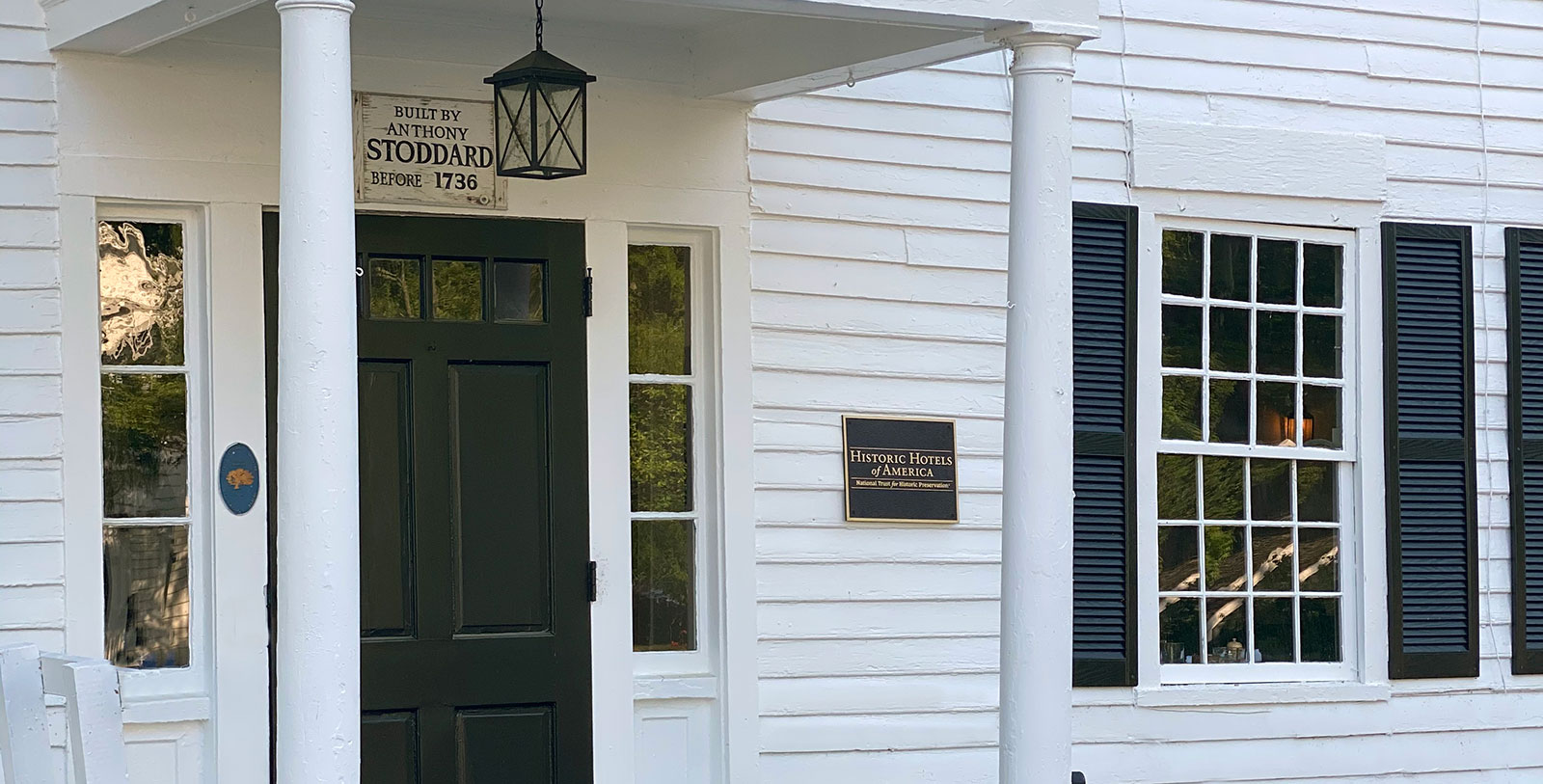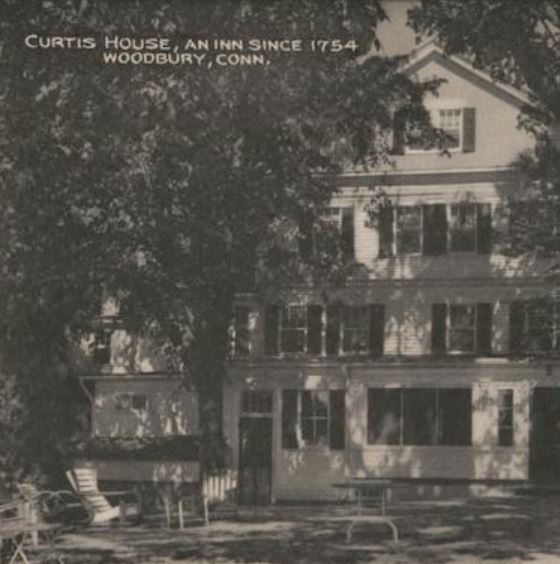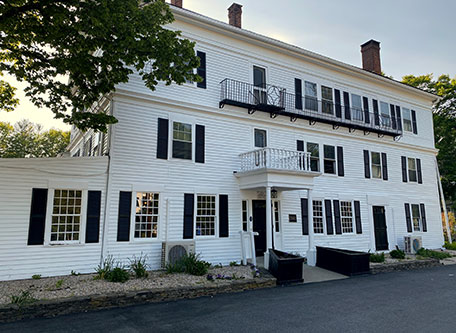Receive for Free - Discover & Explore eNewsletter monthly with advance notice of special offers, packages, and insider savings from 10% - 30% off Best Available Rates at selected hotels.
history
Discover the 1754 House, which historians hail today as Connecticut's first inn.
Listed on the National Register of Historic Places, the 1754 House has been a member of Historic Hotels of America since 2021. The 1754 House is also among the most historic holiday destinations operating in Connecticut today. Family-owned and operated, this beautiful Colonial-era building resides in Woodbury, a bucolic New England town nestled in the heart of the western Berkshires. But the structure actually opened for the first time as the residence of local resident Anthony Stoddard in 1736. Stoddard lived in the building for the next few years, until the Curtiss family acquired the home and transformed it into a roadside inn called the “Curtiss House” some two decades later. The earliest known records state that the Curtiss’ began operating their business within the structure back in 1754, although some local historians suspect that they may have opened it even earlier. Nevertheless, the Curtiss House became a fixture in downtown Woodbury for the better part of four centuries, entertaining all kinds of guests passing through along Main Street. The most recent owners of the structure—the Bates-Walsh family—decided to thoroughly renovate the historic inn, relaunching the home as the “1754 House” in 2020. Today, many hail the 1754 House as Connecticut’s first inn, as well as one of its finest. Visitors can enjoy nearby swimming, boating, hiking, bicycling and golf amenities, or browse the antique shops, historical attractions, and boutiques located throughout the greater Pomperaug Valley. Guests will also enjoy the rich historical character that still exists inside the 1754 House, especially the handwritten list of previous owners who once served as stewards for the building. Seven amazing guestrooms are available inside the main house, as well, while an additional four suites are located in the adjoining Carriage House. Outfitted with the finest modern amenities, each accommodation continues to radiate the same rustic charm that has defined the building since the 18th century. All patrons can meet and mingle downstairs in the parlor, tavern, or restaurant, too. Few places are truly better for a memorable experience in Connecticut than the historic 1754 House.
-
About the Location +
Woodbury was settled centuries ago during the 1670s, back when Connecticut was still a royal colony of Great Britain. In fact, this historic town was among the first European communities to inhabit the Pomperaug Valley. Two distinct group of English colonists from the coastal village of Stratford had created the settlement in search of religious freedom. Reverend Zachariah Walker led the first batch of settlers, who were specifically dissatisfied with the teachings of the Congregationalist Church in Stratford at the time. Walker’s band was then followed immediately thereafter by another sect of religious dissidents under the tutelage of Deacon Samuel Sherman. But unlike Walker’s lot, Sherman’s had received official permission from the Connecticut Colonial Assembly to found a new town near a branch of the Pootatuck River known as the “Shepaug.” Despite the illegality of Walker’s settlement, the colonial authorities eventually granted both communities the right to inhabit the region. Coming together to form a single community, Walker’s and Sherman’s groups purchased an even larger segment of land from a local band of Native Americans. Calling the settlement “Woodbury,” they then set about subdividing the area into plots for various homes and businesses, with some of the outlying houses even receiving 25 acres to farm. All of the structures were rather rudimentary in appearance, designed as interlocking log cabins. The first generation of residents also made a self-governing pact, known to history as the “Fundamental Articles.”
By the time of the American Revolution, the town had become one of Connecticut’s most prosperous. Its residents had created a diverse economy, with all kinds of craftsmen—including blacksmiths, tanners, and merchants—active on Main Street. A few mills resided along the river, too, giving the community a much needed source of products to export. Woodbury played a prominent role during the American Revolutionary War, as some 1,500 men joined the ranks of the Continental Army. In fact, half of Ethan Allen’s Green Mountain Boys militia were from the Woodbury area when the famous patriot attacked Fort Ticonderoga in 1775. Then, three years later, General George Washington graced the town with his presence, instructing his men to build a bridge across the nearby Housatonic. Hundreds of French soldiers even passed through on their march toward the climatic Siege of Yorktown. Woodbury retained its bucolic, agricultural character after the war, even as manufacturing operations debuted in the villages of Pomperaug, Hotchkissville, and Minortown. Mansions showcasing new architectural styles opened in downtown Woodbury as such, specifically a few outstanding Greek Revival-style buildings. Today, Woodbury has retained the same charm it had back when it first appeared at the end of the 17th century. The U.S. Department of the Interior has listed most of downtown Woodbury on the National Register of Historic Places in either the Woodbury Historic District No. 1 or the Woodbury Historic District No. 2. (The 1754 House is one such building identified as a contributing historical structure within the town, residing in the Woodbury Historic District No. 2.)
-
About the Architecture +
The 1754 House stands as a brilliant example of American colonial architecture. Architectural historians today generally define American colonial architecture as covering a wide berth, subdividing it into categories like First Period English, French Colonial, Spanish Colonial, and Dutch Colonial. But most professionals in the field believe that the aesthetics embraced by English—and later British—colonists to be the most ubiquitous, given their widespread cultural influence during America’s infancy. It dominated the architectural tastes of most Americans at the time, until the Federalist design principles overtook them in the 19th century. The style was especially predominant in New England, which quickly saw the creation of another set of two unique subtypes—Saltbox and Cape Cod-style. A different take of English colonial architecture appeared within the southern colonies, as well, which some experts refer to as “Southern Colonial.” The building style resembled the general trends embraced by other colonists in British America, although they differed in that they constructed a central passageway, massive chimneys, and a parlor. Nevertheless, all of the buildings shared strikingly similar qualities. American homes of the age were uniformly simple, and made use of either wood, brick, or stone. Rectangular in shape, they typically extended two to three stories in height. All of the formal parts of the home were located on the first floor, while the family bedrooms occupied the upper levels of the building. The floorplans were also fairly limited in scope, designed to fill each level with just a couple of rooms. This simplicity was slowly modified by the arrival of Georgian-style architecture from Great Britain toward the end of the 18th century. Architects subsequently relied more upon mathematical ratios to achieve symmetry in their designs, and used elements of classical architecture for ornamentation.



































